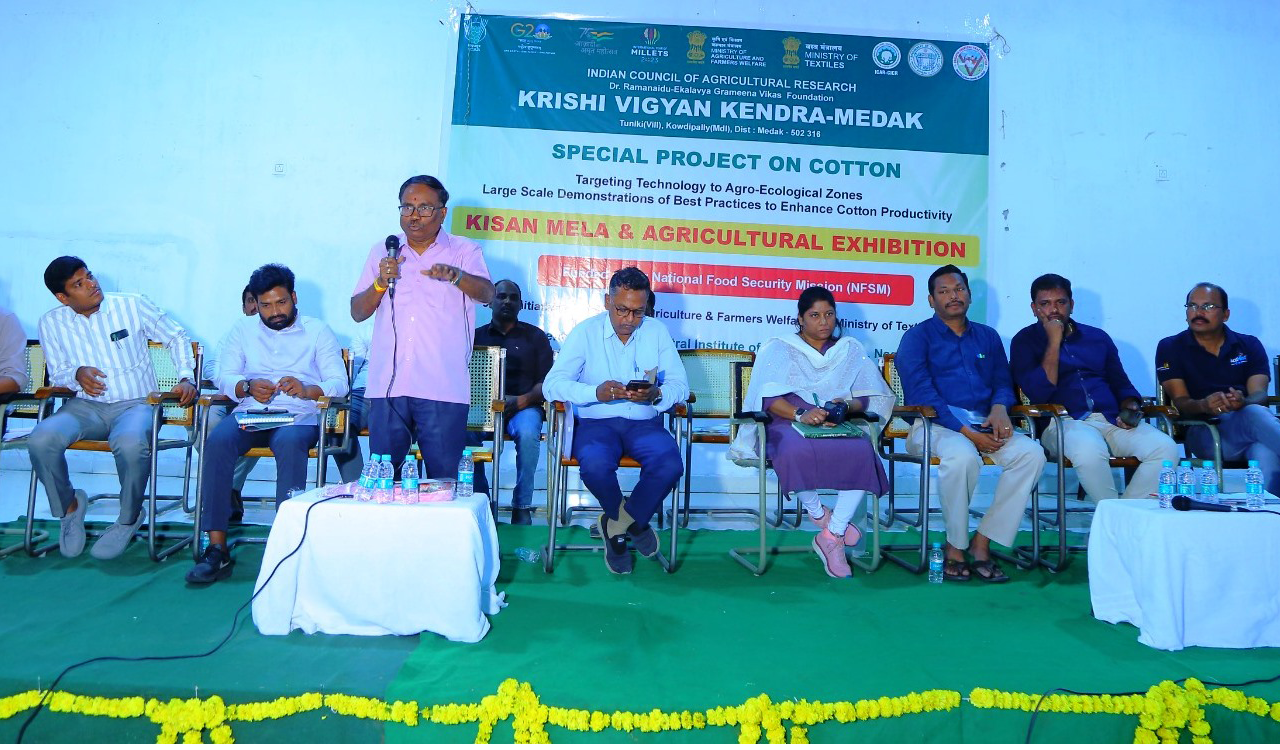The DAO informed that each of the plants would give 20 to 30 cotton bolls. Sivaprasad has said that the agriculture department Siddipet took up high-density cultivation of cotton on 700 acres under the guidance of the Central Institute of Cotton Research, Nagpur on a trial basis this year.
Published Date – 06:34 PM, Fri – 22 December 23

Siddipet: District Agriculture Officer (DAO) Siddipet K Sivaprasad has said that high-density cultivation of cotton and machine harvesting of cotton will address the shortage of the labour issue in farming to a great extent.
Addressing the farmers during a Kisan Mela organised by Krishi Vigyan Kendra-Thunki located in Medak district at Rythu Vedika in Markook on Friday, the Agriculture Officer has educated the farmers saying that the crop duration of a high-density variety of cotton is lesser than the regular varieties.
He further said the farmers should restrict the growth of the high-density cotton crop by spraying mepiquat chloride following the advice of agriculture extension officers.
The DAO informed that each of the plants would give 20 to 30 cotton bolls. Sivaprasad has said that the agriculture department Siddipet took up high-density cultivation of cotton on 700 acres under the guidance of the Central Institute of Cotton Research, Nagpur on a trial basis this year. KVK-Tunki Head and Senior Scientist Dr Sambhaji Dattatray Nalkar has said India is one of the largest cotton-cultivating countries area-wise in the world. However, he has said India’s productivity is very poor compared to other developed countries.
Sensitising the farmers on the better methods of agriculture practices, KVK Scientist Dr Pallavi has said that the farmers should opt for dry seeding of paddy rather than the traditional ways of growing nurseries. She has said that the dry seeding method would need just 8 to 10 KGs of paddy seed per acre while the nurseries need 25 to 30KGs of seed. In addition to that, Dr Pallavi said that the farmer needs to spend Rs 6,000 additionally on labour for transplantation. Markook Agriculture officer T Nagendar Reddy, Scientists Ravi, Prathap Reddy, AEO Vishnuvardhan and others were present.


